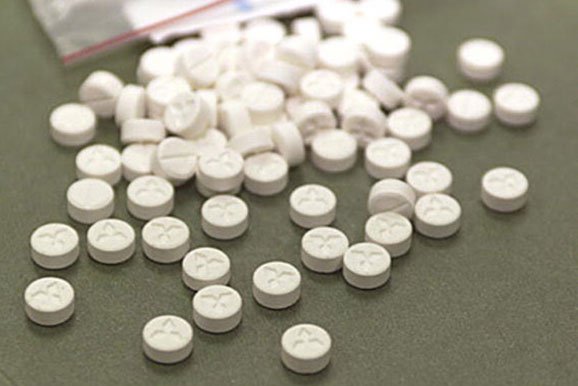The use of ecstasy, a party drug school administrators never
used to see on campuses, is on the rise at Gilroy’s high
schools.
The use of ecstasy, a party drug school administrators never used to see on campuses, is on the rise at Gilroy’s high schools.
Seven students were cited by police this semester for selling, possessing or being under the influence of ecstasy. Although marijuana use has always been an issue, the presence of ecstasy – a drug that is commonly associated with dance parties or raves – on campus is new, administrators said. The drug typically comes in pill form and induces feelings of euphoria, intimacy and heightened awareness. After effects include depression, anxiety, headaches and fatigue. Overdose can result in organ failure, coma and death.
“I believe that there has definitely been an increase in drug usage,” School Resource Officer Cherie Somavia said. “It’s a problem. Students don’t understand what it truly can do to you and the effects of it, both immediate and long term.”
Citations were issued to six students at Christopher High School and one student at Gilroy High School, police said. All the students involved were younger than 18. Police and school administrators would not release their names, but said all the students were released to their parents. Their cases have been forwarded to the Santa Clara County Office of the District Attorney and to the county’s probation department, Somavia said.
Administrators were shocked to hear some of the preconceived, and false, notions students had about the drug.
“Some of the things kids are saying are pretty surprising,” CHS Assistant Principal Patty Jolly said after she and Principal John Perales surveyed students during their social studies classes. “They think it’s legal in certain dance clubs. They think a certain amount is legal.”
The drug has caught on with teens from all walks of life, Somavia said. At less than $10 a pill, ecstasy is cheap, easy to transport and difficult to detect.
School administrators hope to educate students and parents about ecstasy, and drug use in general, through a series of assemblies and outreach activities.
“It’s a community wide problem,” GHS Assistant Principal Stefani Garino said. “It’s not just at Christopher, not just at Gilroy. Sooner or later, we stand the chance of really having some issues. If you take ecstasy, you’re playing with your life.”
At CHS, three of the teens were cited for selling ecstasy on campus, two for being in possession of the drug and one for being under the influence while at school. At GHS, the one student involved was cited for being in possession. Although the three CHS students found selling were recommended for immediate expulsion and expelled, the treatment of the two students caught in possession of the drug at CHS differs from the GHS student with the same offense.
Although state educational code allows administrators to recommend for expulsion any student found in possession of a controlled substance, the two CHS students who violated the law received a five-day suspension. The CHS student cited for being under the influence on school grounds received the same punishment. But at GHS, the student cited for possession was recommended for expulsion, Garino said. The recent drug citation was the student’s first major drug offense, but he had racked up a “laundry list” of other offenses, she said.
At CHS, a first offense is met with a five-day suspension, unless it involves sales, Jolly said.
“There’s almost always some level of interpretation but we try to follow (educational) code exactly,” said Jolly, an educator of 34 years. “If we put all those students up for expulsion, I don’t think we’re teaching them or making any effort to help them learn. If it’s a student’s first offense and they have no history, then you really need to question what resources you have to help them, especially with kids in the developmental stage.”
The enforcement of the rules at the district’s high schools must be consistent, Garino said.
“We need solidarity,” she said. “This is something we can’t just react to. We need to really sit down and clarify as a community how we’re going to respond to this.”
Trustee Denise Apuzzo agreed.
“All schools need to be enforcing policies the same way,” she said. “It opens a can of worms if the public thinks some behavior is tolerated at one school and not tolerated at another. There has to be consistency.”














